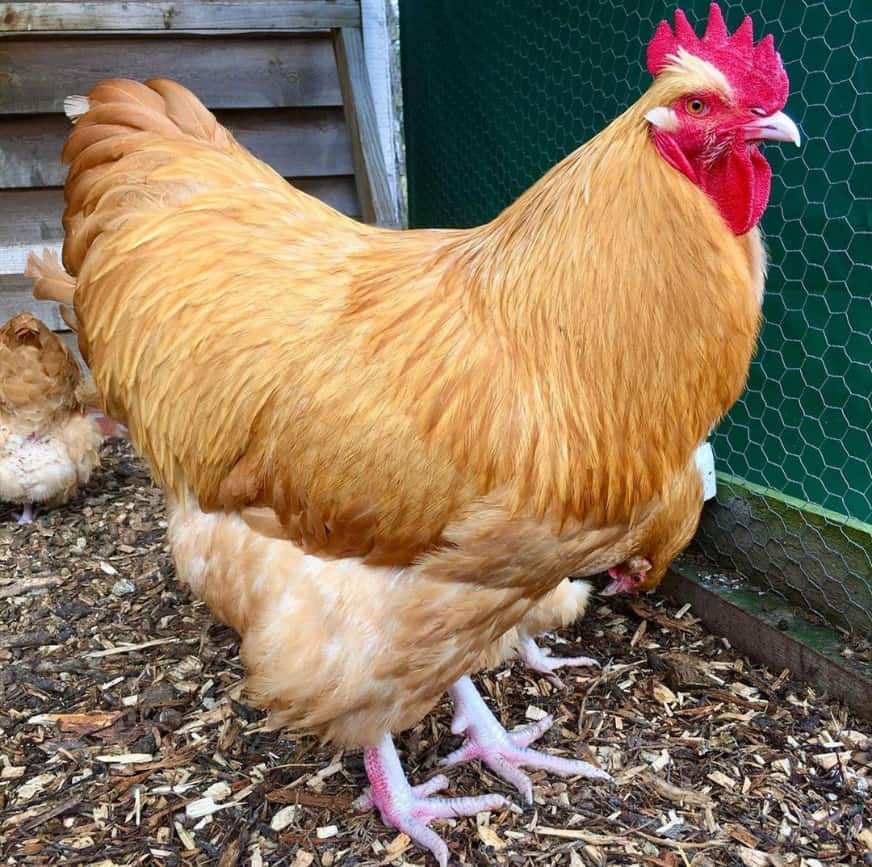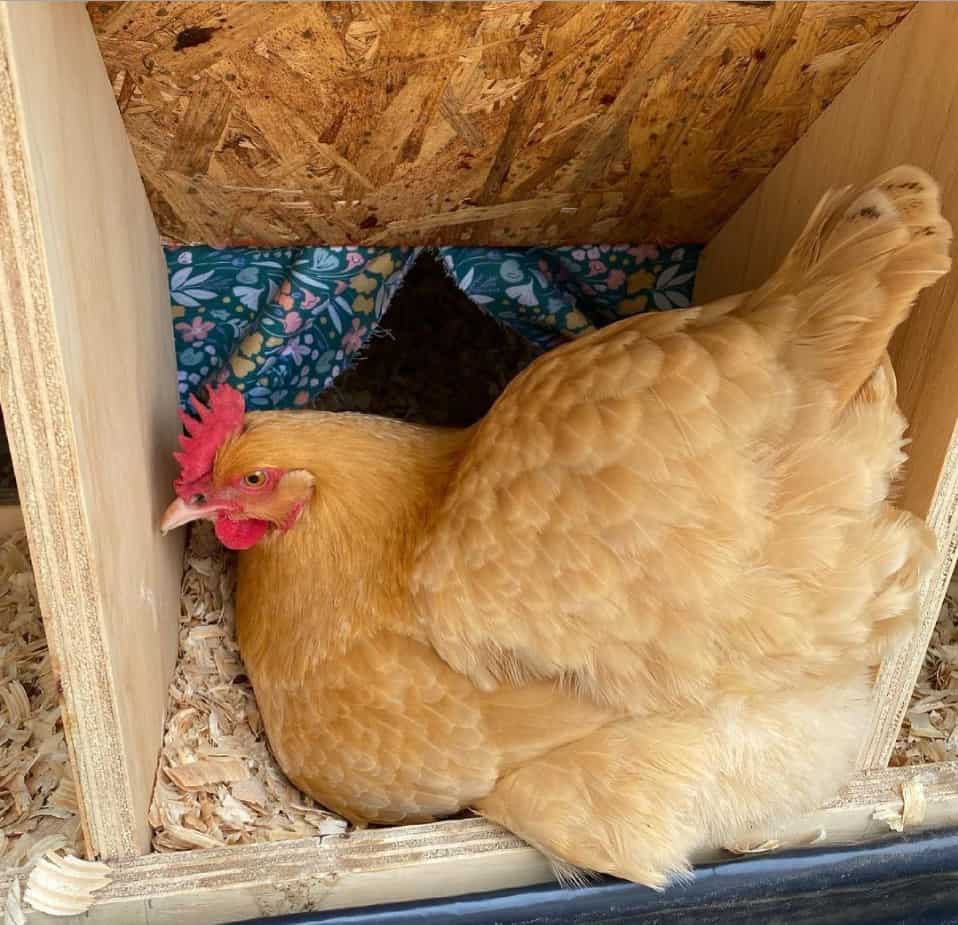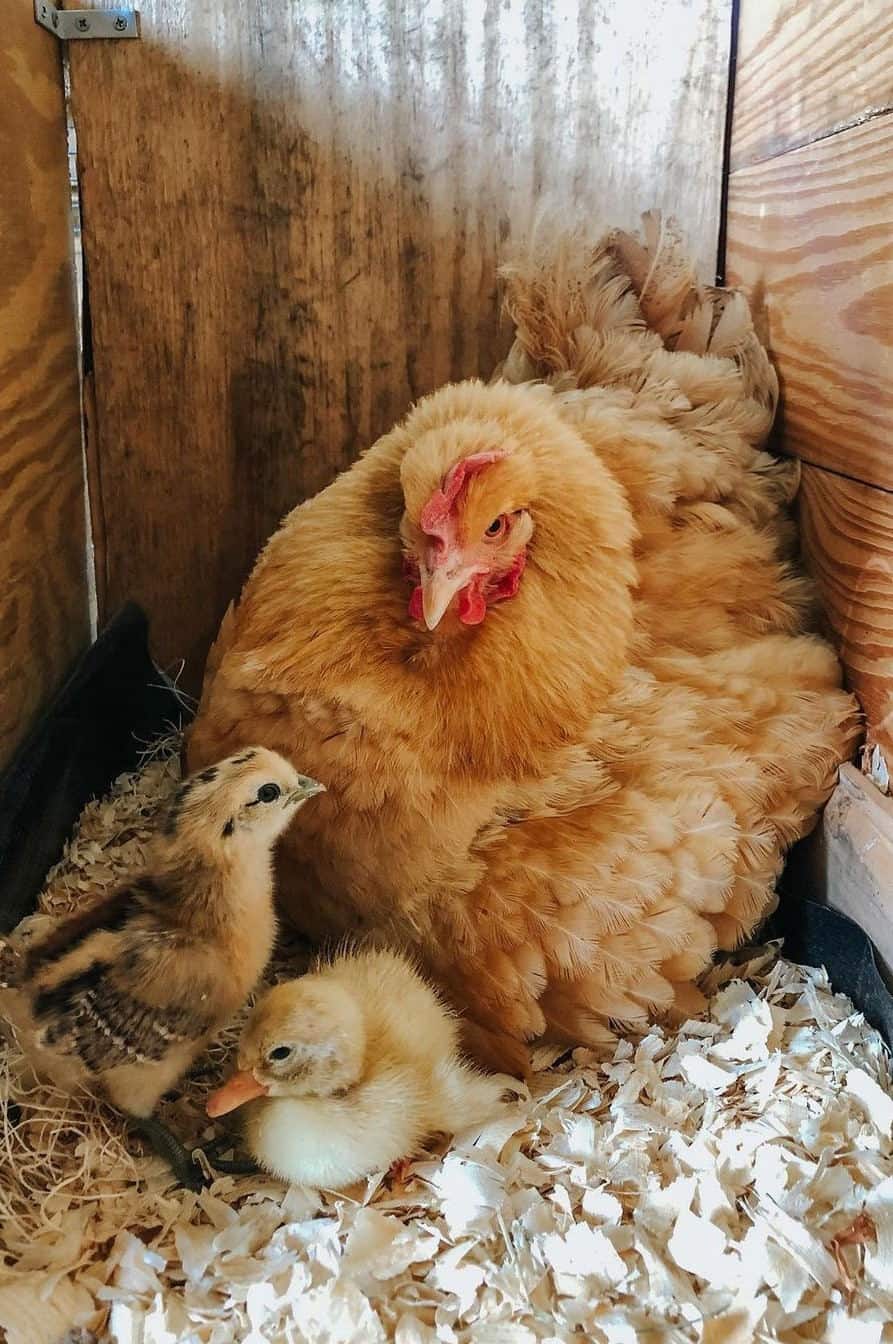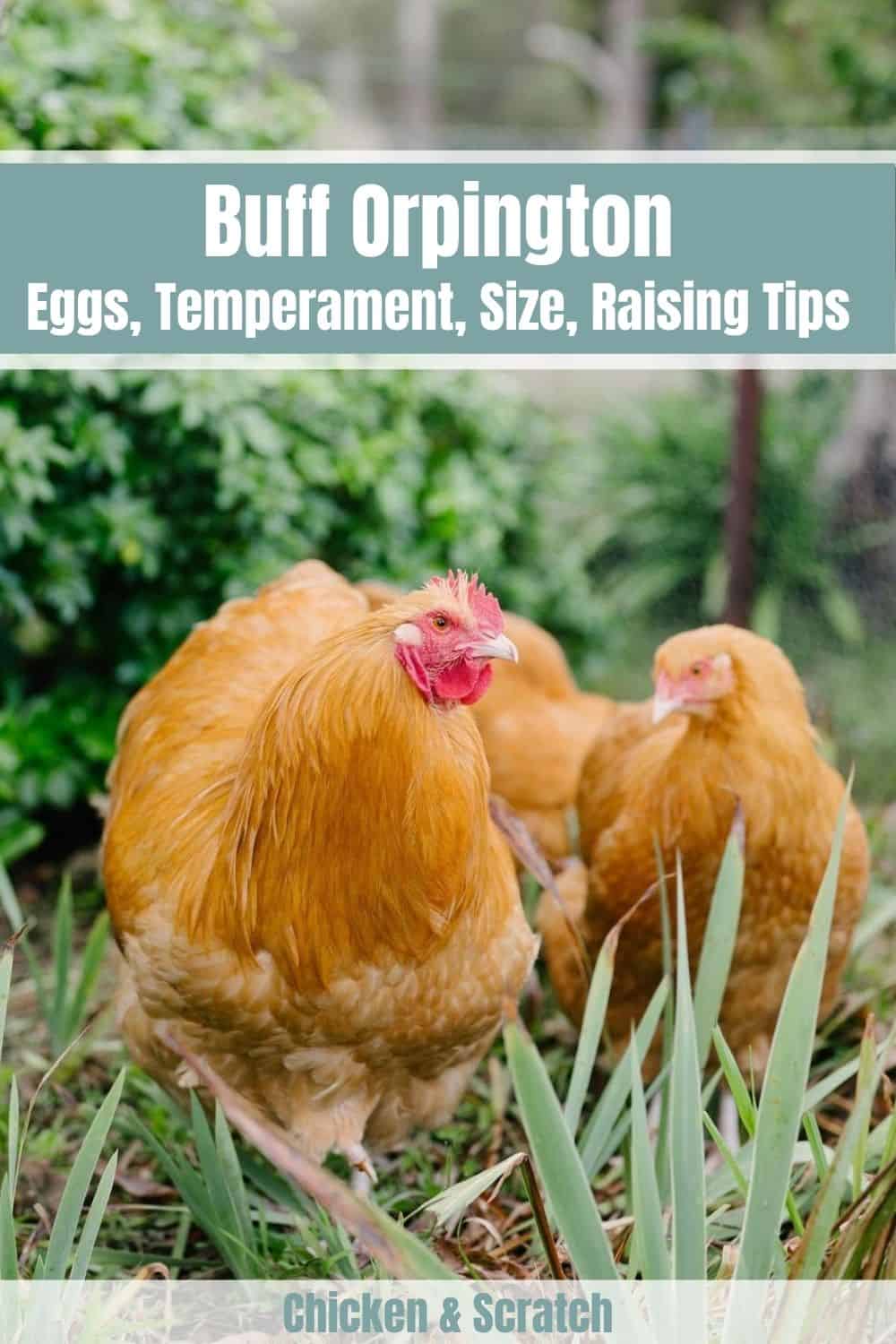The Buff Orpington chicken is a sweet, good-tempered breed that looks about as classically “chicken-like” as they come! If you’re looking for a steady egg layer with a good disposition and a sturdy build, the Buff Orpington is a great choice of chicken for beginner poultry lovers and seasoned professionals alike!
This article will cover
- History of Buff Orpingtons
- Buff Orpington Breed Standard
- Personality and Temperament
- Buff Orpington Egg Laying
- Health Issues and Care
- 5 Tips for Raising Buff Orpington Chickens
| Feature | Buff Orpington |
|---|---|
| Purpose | Dual purpose (meat and egg) |
| Egg Color | Brown |
| Egg Size | Large |
| Broody | Yes |
| Heat Tolerance | No |
| Cold Tolerance | Yes |
| Comb Type | Single Comb |
| Egg Production | 150-200 eggs per year |
| Chicken Skin Color | White |
| Life Span | 8-10 years |
| Adult Weight (Hen) | 8 lbs |
| Adult Weight (Rooster) | 10 lbs |
| Backyard Friendly | 5/5 (Very friendly and docile) |
History of Buff Orpingtons

In England in the late 1800’s, most domestic chickens were either good egg layers or good table chickens. As a rule, the best egg layers were scrawny and rangy.
The best table chickens tended to lay small eggs or to lay eggs only very rarely. In 1886, however, a man named William Cook would change the standard of domestic chickens for good.
William Cook was a coachman who lived in the town of Orpington in Kent, England. He had noticed the disparity in chicken breed qualities and wanted to create a chicken that was great for egg-laying and meat production.
By carefully selecting and breeding the best qualities from a wide variety of excellent egg layers and meat-producing chickens alike, Cook created what would soon become known as the Orpington breed.
The first Orpingtons had black feathers that helped to disguise the soot and dirt that were so prevalent in English cities at the time. However, Cook also developed a variety of different colors for the breed, including a golden or “buff” color variation.
Nowadays, Buff Orpingtons are most well known as show breeds. Their pretty golden color and quintessentially “chicken-y” appearance makes them a beautiful addition to any family or farm.
That doesn’t mean that their egg and kitchen abilities have faded since their creation. On average, a Buff Orpington lays between 150 and 200 eggs per year.
According to historical records, Buff Orpington chickens used to lay upwards of 340 eggs a year, but this number has decreased as the chicken’s appearance and breed standard became more important than their egg production.
Overall, however, Buff Orpington chickens are still the pretty, hard-working, tough little birds that they were bred to be more than two hundred years ago on the other side of the ocean.
Buff Orpington Breed Standard

As mentioned above, Buff Orpington chickens have a very classic, typically “chicken-y” appearance. According to the American Poultry Association, the standard Orpington chicken must meet several qualifications in order to be considered a true example of the breed:
- Color: Orpington chickens generally come in four colors. The “buff” or golden color was accepted by the Poultry Club of Great Britain in 1902, the black and white colors were accepted in 1905, and the “blue” Orpington in 1927. The Blue Orpington is actually more of a slate grey, but the speckled appearance makes it look blue in certain lights. Overall, the Buff Orpington is the most common of the four colors.
- Size: Buff Orpington birds are relatively tall chickens, standing between 12 and 15 inches. The male bird may be slightly larger than the female chicken, but both genders still average slightly taller than a foot in height.
- Weight: As mentioned above, the Orpington chicken is bred for food as well as for eggs. As a result, the average bird weighs in at an impressive 10 pounds! Female chickens weigh slightly less (around 8 pounds), which is still heavy for a chicken.
Personality and Temperament
Perhaps due to their hybrid vigor as the result of several different breeds, Buff Orpingtons are remarkably friendly birds! With few exceptions, they enjoy being part of a large flock of birds, and they are usually fairly friendly around humans as well.
Buff Orpington roosters may be slightly more territorial than the hens, especially if they are the only male chicken in the flock. If you notice one of your Orpingtons acting more aggressively towards humans or other animals, you may have to take the time to socialize him or her a little better.
As a general rule, holding or carrying your Buff Orpington chicken throughout the day will usually help them work through any temperament issues. Some other Orpington owners have reported that their birds love to sit on their laps while they’re working or just relaxing around the house!
Because Buff Orpingtons are such relatively laid-back chickens, you may want to watch out for their behavior around other birds. These chickens are prone to be bullied, and more aggressive breeds may be able to push them around without too much difficulty!
Overall, a Buff Orpington chicken is usually a sweet, relaxed bird that can play well with children and pets alike!
Buff Orpington Egg Laying

Egg laying is one of the main things Orpington Buff chickens were bred for, so it should come as no surprise that they’re pretty great at laying eggs!
According to Essex Orpingtons, an Orpington breeding company in Essex, England, a female Orpington chicken should lay around 150 to 200 eggs per year!
In fact, because this specific breed of chicken lays so many eggs, try and keep on top of the egg production as best you can. If you notice your hen acting “broody” and short-tempered when you try to touch her eggs, it may be a sign that you need to be cleaning out her nest more regularly.
You can also increase your chicken’s egg production by closely monitoring her diet! Foods that are high in protein and calcium will help your chicken produce a higher number of eggs on a regular basis.
Even if you aren’t looking for extra eggs, a high-protein and high-calcium diet will still help your Orpington stay happy and healthy for a lot longer.
Orpington chickens usually start laying as young as nine months and can keep producing that same high number of eggs until they’ve reached the ripe old age of three years!
Health Issues and Care
Buff Orpingtons are a particularly resilient breed of chicken, which makes them a great choice for beginner poultry lovers! They can handle colder temperatures than the average bird, and their warm feathers make them well-suited to damp climates.
Unfortunately, because of those same dense feathers, Orpingtons are particularly prone to fleas and mites. Make sure you have a spot in your yard where your chickens can dust bathe on a regular basis in order to keep their feathers and skin clean and pest-free.
As mentioned earlier, you may also want to be carefully integrating a new chicken into a preexisting flock. A Buff Orpington chicken may provide an easy target for aggressive or domineering birds.
Buff Orpingtons also have a slight propensity towards obesity. The average Orpington chicken will eat anything placed in front of it, even when it isn’t hungry, so make sure you’re keeping a close eye on your flock’s daily food intake!
Finally, make sure your chickens have enough room to run around outside as well as a warm place inside to nest and roost. In general, you can find plenty of guides like these that give information as to how much space your chickens should use.
5 Tips for Raising Buff Orpington Chickens

Ultimately, raising a Buff Orpington chicken isn’t very different from raising a chicken of any other breed. With that in mind, some of the most stress-saving tips and tricks include:
- Know Your Neighborhood: Take some time before you grow your flock to take stock of your surroundings. Temperature fluctuations, local predators, and even local plants can all impact your chickens differently. Consult a local expert or check online for issues specific to your neighborhood!
- Don’t Forget to Hydrate! Chickens may have very different diets than humans, but proper hydration is still extremely important for your feathered friends! Make sure your chickens always have access to a clean, fresh source of water.
- Keeping It Cool: Similar to the above, overheating is one of the main sources of stress for a chicken! Make sure your feathered friends have a place to stay cool and sheltered away from the heat of the sun. [Flock Care: How to Keep Chickens Cool in Summer]
- Keeping Things Clean: Make sure you clean your chicken coop on a regular basis. If the living area gets too messy, your chickens will be stressed and unhappy, which can lead to a drop in egg production. They will also be more prone to disease and infection.
- Variety is the Spice of Life: Don’t be afraid to mix up your chickens’ diet! A healthy chicken will eat almost anything you put before it, but look for food staples that boost its protein and calcium!
Summary
In the end, it doesn’t matter if you’ve been raising chickens all your life or if you’re just starting to dip your toes into the world of keeping and raising a flock of your own! A Buff Orpington chicken will make a wonderful addition to your feathered family, no matter the size!


Joseph Hudson has been raising chickens for over 15 years. In 2018, he completed the Agriculture & Natural Resources program at Mt. San Antonio College. He currently raises over 1400 chickens on his 7.5-hectare farm. He keeps sharing his experience on raising healthy and happy chickens on Chicken Scratch The Foundry.








I love Orpington breed
I believe this is the best breed to begin with. They are docile with children and don’t seem as aggressive as other breeds. They are definitely the “Golden Retriever” of chickens.
definetly
best. chickens.ever. Love this breed
I hand raised 11 buffs, they are around 10 months old but only one is laying eggs, what can I do, they are very healthy. thanks for any help you can give me.
Hello Kay!
First off, congrats on raising 11 Buff Orpingtons! They’re such lovely birds. It’s not unusual for hens to start laying at different times, especially if they’re all the same age. Here are a few things you can check:
1. Ensure they’re on a proper layer feed with adequate calcium.
2. Hens need about 14 hours of daylight to lay consistently. As the days get shorter, you might consider adding some supplemental lighting.
3. Make sure their environment is calm and they aren’t being stressed by predators or other factors.
4. Ensure you have enough cozy, private nesting spots for them.
Remember, patience is key. Sometimes they just need a bit more time. Wishing you a flurry of eggs soon! 🥚🍳